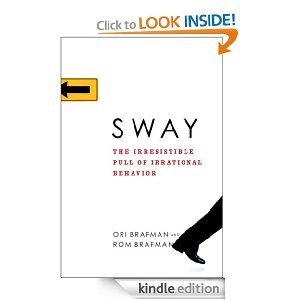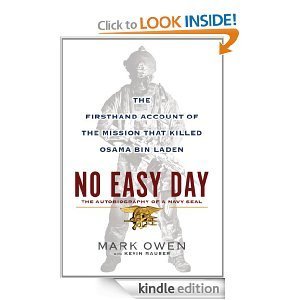Carol Anita Ryan's Blog, page 2
June 8, 2014
What lurks in The Lowland
In the novel, The Lowland, runoff water and debris rush into a physical low-point near Calcutta and then settles leaving a marshy mess. The central characters experience a similar reservoir of experience that rots and festers when it remains unexamined and therefore undisturbed for decades. The story takes place in the late 1960s until the present in India and in the U.S. During the early period of the story, India, like most of the world, experienced revolutionary political ideologies. Around Calcutta, Naxalites preached a violent overthrow of the status quo and influenced the college-aged characters.
In many ways the story in the novel could have been what happens to 1960s-era weathermen who grow old hiding their past. But the characters are Bengali intellectuals, mild mannered and not given to expressing themselves (or even communicating much).
I was in college in the late 1960s and was exposed to the political and social movements of the day (in the U.S. this also included the anti-war movement). I also befriended many Indian graduate students at my university. Then, I traveled in India, even crossing paths with Naxalites near Calcutta. Maybe I have more knowledge than most about the story’s basis in fact, but I enjoyed the book. True, a few of the characters were frustratingly passive. I’m reminded of Bengali films of that era where main characters suffered greatly where an American would have simply spoken up, demanding change of some kind. But even without personal insights into the story, it’s a compelling read.
May 26, 2014
What do flowers mean?
The Language of Flowers, is a contemporary novel set in the San Francisco Bay Area. The title refers to the Victorian custom of communicating emotional messages by means of the gift of flowers. The main character, Victoria, has a bleak childhood in foster care. The book alternates chapters about her life once she ages out–at 18, and her earlier life as an unwanted foster child. In case you thought only of Victorian orphans suffering in 19th Century novels, Vanessa Diffenbough’s novel reveals the problems contemporary foster kids endure, and the long term consequences.
There is so much to savor in this book. You learn about the language of flowers, the retail florist business, the under- the- table economy, a foster child’s life. And there is a love story or two, and a multi-generational family mystery.
I was caught up in the story and enjoyed the book. I had a hard time believing some actions of a few characters (the rich land owners) but appreciated learning about the foster-child world. With a few reservations, it is a good book.
March 26, 2014
Get Rich, Carefully–a surprisingly fascinating find
The world is full of exotic and wonderful things to study but until recently, for me at least, the stock market was not among them. A few years ago I happened across ‘Mad Money’ on T V and was shocked to find a person who knew about the market and also could talk (at break-neck speed) intelligently about practically anything.
From time to time Jim Cramer, the ‘Mad Money’ guru revealed just enough personal history to intrigue me (for example he once lived in his car in Sacramento during a financially challenging time). Such tidbits led me to see him as a real person not my stereotyped idea of a successful stock analyst.
As I watched the show I’ve picked up some financially valuable information about investing in the market and my esteem for Cramer as a thinker has grown, too.
That’s why I bought ‘Get Rich Carefully.’ Would his book further my regard for his open-mindedness? Would I learn more about making money in the stock market? Would I remain impressed with his attention to detail in the course of reading his book? Spelling and grammar are just two of the things that if not done right could crush my regard for Cramer even if his business savvy held up.
After finishing the book, I’m happy to report that ‘Get Rich Carefully’ succeeds on all counts. It provides an easy to read explanation of what you need to know–and the pit-falls to avoid—in stock investing. Cramer reveals his hits and misses with modesty and humor. That kind of candor is refreshing, enlightening, and rare. In addition to learning about the actual market of today, the book gives a great overall picture of business in America.
March 17, 2014
The Songs of Willow Frost–review
The Songs of Willow Frost: A Novel, is the eagerly awaited second book by best-selling author, Jamie Ford. The story takes place in 1920- 1930s Seattle and is narrated by a Chinese-American woman and her young son.
Since I spent much of my life within a couple of miles of important landmarks in the book, I was excited to see how the author described them. Seattle has long had an important Chinese-American minority, so this aspect intrigued me, too.
I soon found myself wondering if Jamie Ford had made a bold but flawed decision to tell the story from the viewpoint of a young boy and his young mother. Several reactions by the characters (for example, there is no response to an incestuous rape) are inexplicable. The main character seems morbidly passive and depressed as one bad thing after another happen to her. Even if I believed some aspects of her character, I would still find them too boring to build a plot around. There has to be conflict, but there needs to be hope within a plot.
Yes, Chinese-Americans, especially females had it tough in those days. But, it would be nice to have seen some of the lighter side of their life. Maybe telling the story from the would-be Prince Charming’s view would have been more interesting and believable.
The Sacred Heart property which is the orphanage where much of the story takes place (non-stop awful things happen there, too), was bought up by the city in the 1980s for use as a community center. I’ve shopped in boutiques there and taken yoga classes. The old-growth wood in the building and the acres of land surrounding it, have distinctive odors, sounds, and textures. I was hoping Jamie Ford would reveal those details. Instead we got a thin narration of a sad story sliding from bad to worse.
February 18, 2014
Hold Off Until You Know: The All Of It
On a recent Great-Britain-like grey day, I happened to open a rarely used drawer in my dining room and came across a book. I didn’t recognize it until I checked the title page and saw the author’s inscription—to a respected writer I know of by reputation. Then, I remembered: my friend Kathy had loaned me this book during her last visit only it had promptly vanished.
I intended to glance at the first page but several hours later I finished the book. Maybe it was the grey day, but it felt so right to follow along on the story set in rural Ireland.
The All of It by Jeannette Haien seems like ancient history because the characters are so isolated and innocent, but actually it’s set in the recent past. It’s a beautifully told story involving few characters. It makes you question our tendency to rush to judgment before ‘the all of it’ is known.
At the end of the novel the story has unfolded and a fish is caught. You’ll be richer if you find this gem of a book.
February 3, 2014
Solving Mysteries: a review of Mr. Penumbra’s 24-Hour Book Store
Mr. Penumbra’s 24-Hour Book Store packs a lot into a small space. The bookstore is tiny but holds many volumes of mysterious coded books. The book is likewise short and intense; it’s a suspenseful novel without violence. Mysteries are uncovered; puzzles are solved using research and technology.
It has a story for our time, where both old knowledge (early printed books) and the latest new knowledge (Google on steroids) work together to solve a maze of puzzles.
While I liked the plot and characters, I did notice a certain claustrophobic quality to the scenes. The characters were always in small dimly lit or dark spaces. Maybe because they were usually reading or staring at a screen, there were almost no scenes outdoors, let alone in nature. The main characters are twenty something years old; shouldn’t they play outside once in a while? Except for that personal quirk, I enjoyed the book.
Google on Steroids–Part of Puzzle Solving: a review
Mr. Penumbra’s 24-Hour Book Store packs a lot into a small space. The bookstore is tiny but holds many volumes of mysterious coded books. The book is likewise short and intense; it’s a suspenseful novel without violence. Mysteries are uncovered; puzzles are solved using research and technology.
It has a story for our time, where both old knowledge (early printed books) and the latest new knowledge (Google on steroids) work together to solve a maze of puzzles.
While I liked the plot and characters, I did notice a certain claustrophobic quality to the scenes. The characters were always in small dimly lit or dark spaces. Maybe because they were usually reading or staring at a screen, there were almost no scenes outdoors, let alone in nature. The main characters are twenty something years old; shouldn’t they play outside once in a while? Except for that personal quirk, I enjoyed the book.
January 21, 2014
What Were They Thinking? ‘Sway’ has some answers
Why do normally intelligent people make illogical decisions? It’s a good question that the book ‘Sway’ attempts to answer.
Several examples of sways are illustrated with questionable social science experiments. A few of the experiments were from an era when controls on harming participants were lax. Some studies were from other countries where apparently deceit or the harming of subjects is allowed in the interest of science. For that reason some of the conclusions reached about why sways happen are suspicious.
The verifiable information in the book was scant. Some things worth knowing: our brains only allow for greed or altruism at one time, loss aversion is dramatically stronger than the desire for gain, and because of that there is a tendency to over-commit to a losing course in order to avoid certain loss.
There are worth-while things in this book. It could have been edited down to a magazine article length, though.
January 6, 2014
Ambien, Automatic weapons, and Bin Laden
Professional killers on Ambien with automatic weapons, what could possibly go wrong? In ‘No Easy Day’ by Mark Owen, a book that claims to give a close look at the Seals and the mission to kill Osama Bin Laden, we find out.
The elite Seals receive thorough, state-of-the-art training and equipment (just one accoutrement, night goggles, cost $65,000) in order to succeed. But being human, they still bitch and moan about everything that interferes (in their view) with what they enjoy doing. After reading ‘No Easy Day’ I have an idea what that is. For America’s warrior class it is attacking the ‘enemy’. Others indoctrinate the gladiators with ‘facts’, but not language, history or culture of the enemy. Certainly not the predictable consequences of their killing and destruction.
The author recounts several missions in Iraq prior to the Bin Laden mission. I was amazed by his lack of imagination. How did he think the Iraqi civilians who have a helicopter drop onto their building (in error in some cases) as part of a night of terror would react? The results of the Seals indoctrination: terminal grumpiness and boredom. For example, even listening to the President thanking them for a successful mission in killing Bin Laden leaves the author bored and irritated.
Whomever the writer really is (Mark Owen is a pseudonym), he does a good job in many ways. The book is more revealing than expected. It shows us the alarming results of the ‘war on terror’. Just to be clear: in my view Bin Laden had it coming. So did a few dozen of his followers. I’m glad the Seals were successful in killing them. What our war on terror has unleashed is another thing though; one that increases rather than ends the madness.
December 26, 2013
Steve Jobs: Hero or Zero?
I can’t decide. It’s been weeks since I finished reading the Steve Jobs biography. Was Steve an arrogant bore (parking in disabled parking spots, treating others cruelly for example), or did his contributions to contemporary life make him a hero? What I am sure of is that Isaacson’s 600+ page book is absorbing and well written. He manages to create a story out of Jobs’ life and influence on Apple.
I gained a better understanding of Jobs’ contribution to Apple’s designs. While reading the book on my Kindle I started wishing I’d bought it on my iPad. The Kindle is not as intuitively designed, nor as much fun as the iPad. I now appreciate how much Jobs was responsible for that.
Jobs was a seven years younger than me, but because he was so precocious, we did a lot of the same things when we were young (for example, going to India). He didn’t finish his studies at Reed and he suffered from the gaps in knowledge that cripple the self-taught. But he was too arrogant to recognize it. ‘You don’t know what you don’t know’ is the best argument for staying in a good school. Jobs might well be alive today if he’d gained a bit of humility earlier in life.
Despite a lot of negative things written about Jobs, he had many devoted family members and friends at the end of his life. Perhaps that tips the balance in his favor. Regardless, Isaacson has written an entertaining and well-balanced account of a complex man.



![51WOjjAh6pL._SL160_PIsitb-sticker-arrow-dp,TopRight,12,-18_SH30_OU01_AA160_[1]](https://i.gr-assets.com/images/S/compressed.photo.goodreads.com/hostedimages/1395978324i/9071611.jpg)








